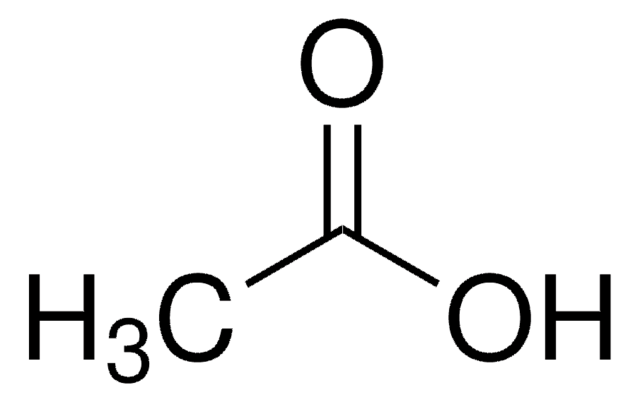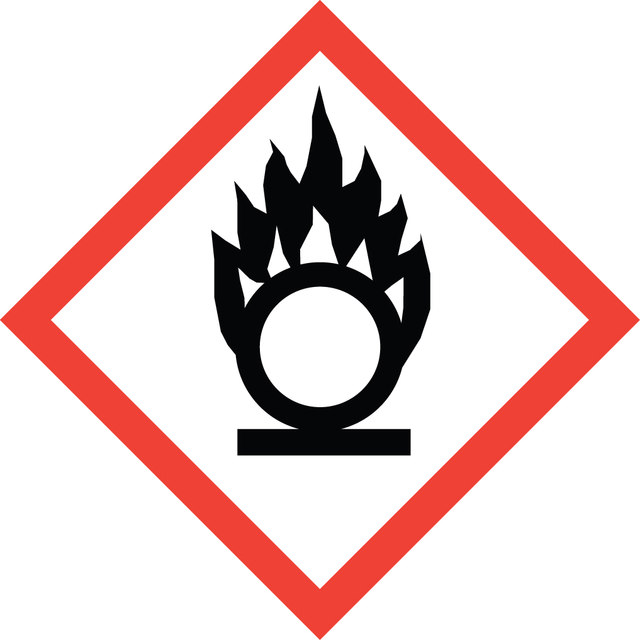All Photos(1)
About This Item
Empirical Formula (Hill Notation):
HNO3
CAS Number:
Molecular Weight:
63.01
EC Number:
MDL number:
UNSPSC Code:
12352106
PubChem Substance ID:
Recommended Products
vapor pressure
8 mmHg ( 20 °C)
concentration
65%
bp
120.5 °C (lit.)
SMILES string
O[N+]([O-])=O
InChI
1S/HNO3/c2-1(3)4/h(H,2,3,4)
InChI key
GRYLNZFGIOXLOG-UHFFFAOYSA-N
Looking for similar products? Visit Product Comparison Guide
General description
Nitric acid is generally used as a primary reagent for the nitration of organic molecules. It is also used as a strong oxidizing agent in organic synthesis to perform the oxidative transformations.
Application
Nitric acid is used as a reagent in:
- The nitration of aromatic compounds, aromatic heterocycles, alkenes, active methylene carbons, etc.
- The oxidation of alcohols, aldehydes, esters, and heteroatoms.
- The aromatization and dehydrogenation reactions.
Signal Word
Danger
Hazard Statements
Precautionary Statements
Hazard Classifications
Acute Tox. 3 Inhalation - Eye Dam. 1 - Met. Corr. 1 - Ox. Liq. 3 - Skin Corr. 1A
Supplementary Hazards
Storage Class Code
5.1B - Oxidizing hazardous materials
WGK
WGK 2
Flash Point(F)
Not applicable
Flash Point(C)
Not applicable
Regulatory Information
新产品
Choose from one of the most recent versions:
Already Own This Product?
Find documentation for the products that you have recently purchased in the Document Library.
Nitric Acid
Parker KA, et al.
Encyclopedia of Reagents for Organic Synthesis, Second Edition (2001)
Nitric acid in the presence of P2O5 supported on silica gel?a useful reagent for nitration of aromatic compounds under solvent-free conditions
Hajipour AR and Ruoho AE
Tetrahedron Letters, 46(48), 8307-8310 (2005)
Oxidation of benzylic alcohols and ethers to carbonyl derivatives by nitric acid in dichloromethane
Strazzolini P and Runcio A
European Journal of Organic Chemistry, 2003(3), 526-536 (2003)
Lauren E Kremer et al.
Journal of inorganic biochemistry, 147, 227-234 (2015-05-11)
Uncontrolled reactions in biological media are a main obstacle for clinical translation of V-based anti-diabetic or anti-cancer pro-drugs. We investigated the use of controlled-release pharmaceutical formulations to ameliorate this issue with a series of V(V) and (IV) complexes of anionic
Alyson M Baergen et al.
Environmental science & technology, 47(2), 815-820 (2012-12-15)
The fate of NO(x) (=NO + NO(2)) is important to understand because NO(x) is a significant player in air quality determination through its role in O(3) formation. Here we show that renoxification of the urban atmosphere may occur through the
Our team of scientists has experience in all areas of research including Life Science, Material Science, Chemical Synthesis, Chromatography, Analytical and many others.
Contact Technical Service






